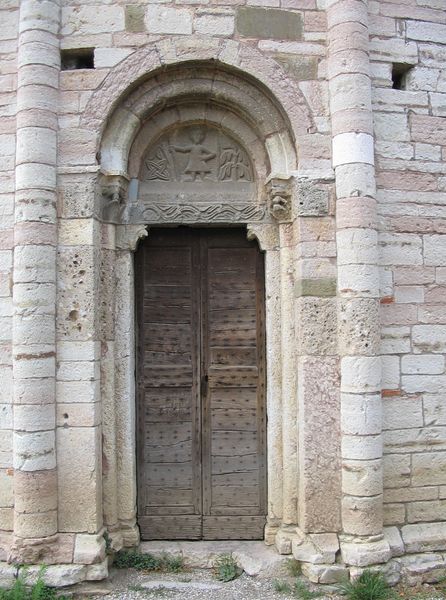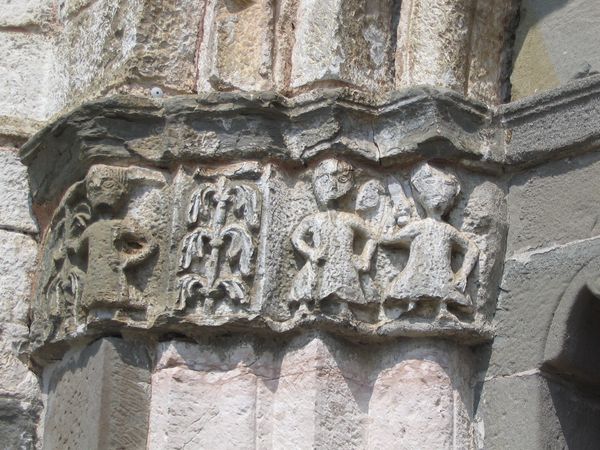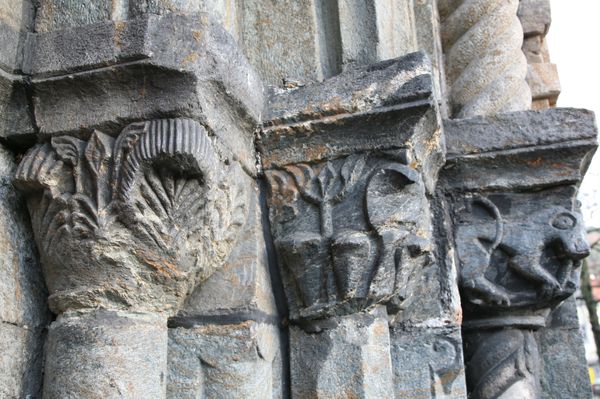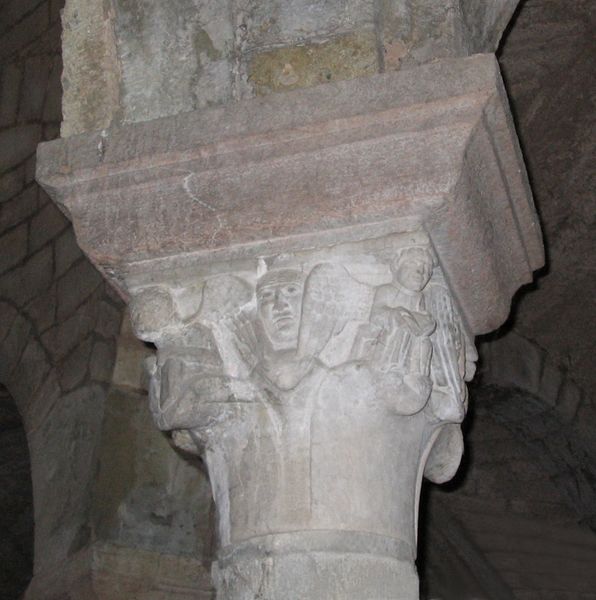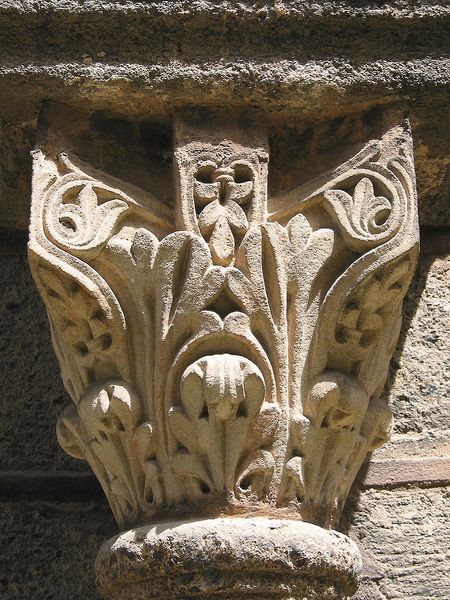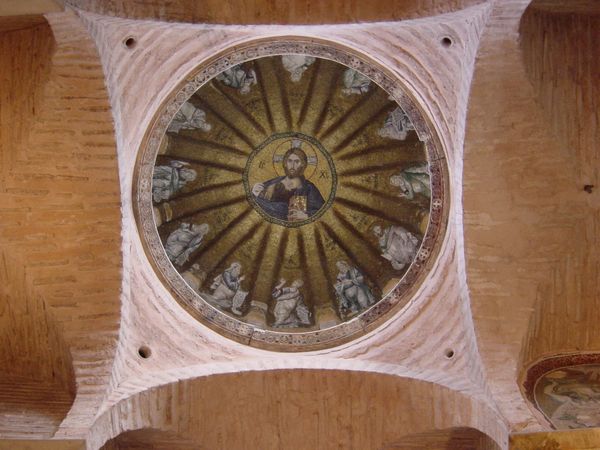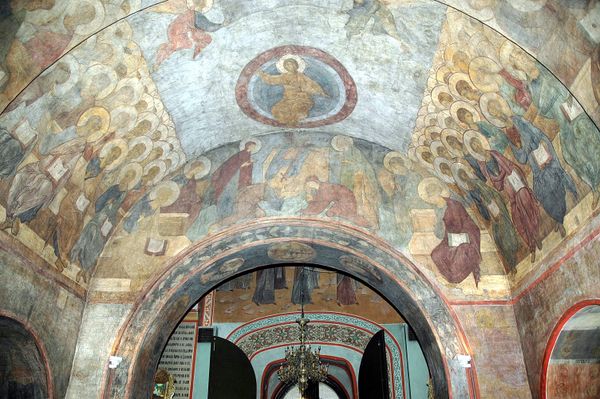
Window and Lombard Band of the Rotunda of San Tomè, Bergamo, Italy 1100
0:00
0:00
architecture
#
medieval
#
historic architecture
#
traditional architecture
#
romanesque
#
architecture
#
historical building
Copyright: Public domain
Editor: We're looking at a photograph of the Window and Lombard Band of the Rotunda of San Tomè, in Bergamo, Italy, dating back to about 1100. It's incredible to think about the architecture of that period. What strikes me is the use of stone – the sheer weight and the craft required to build something like this. How would you approach analyzing this? Curator: From a materialist perspective, I find it crucial to investigate how the specific qualities of stone impacted the architecture itself. The availability, the quarrying techniques, the skill of the stonemasons; these all played a key role in shaping Romanesque architecture. Editor: So, the material dictated the design? Curator: In part, yes. Consider the scale of the individual blocks. They're substantial, requiring significant manpower for both extraction and placement. The seemingly simple round form is a result of the limitations of the materials and the available labor. Each stone speaks to the socioeconomic conditions of the time. The design wasn't just an artistic choice, it was the result of logistical constraints. Editor: That makes me think about the consumption of resources and labor during the 12th century. It's not just about appreciating the aesthetics, but recognizing the work that went into it. Curator: Precisely. This Rotunda wasn't conceived in isolation. It emerged from a nexus of material resources, skilled labor, and societal priorities. Examining these aspects lets us consider what materials were valued and why. Editor: It completely transforms how I see the structure! Instead of just admiring the Romanesque style, I'm considering the complex interplay of human effort, material constraints, and ultimately, what it tells us about the past. Curator: Indeed. This building reflects labor and economy as much as any religious or artistic intent. Seeing architecture through the lens of materiality deepens our understanding of not just the artifact, but of the people and conditions that brought it into being.
Comments
No comments
Be the first to comment and join the conversation on the ultimate creative platform.

